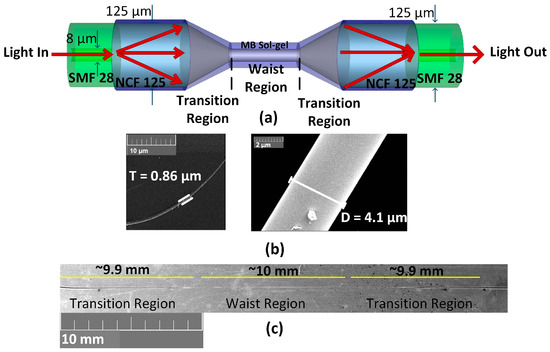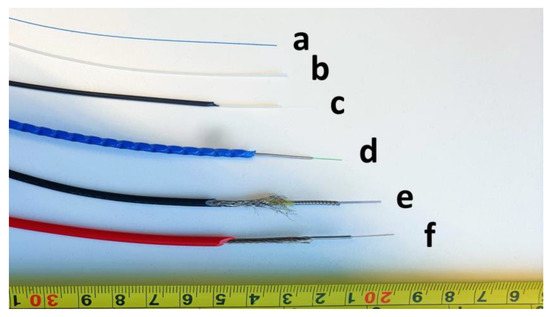Benefits of Using an Optical Fibre Diameter Analyser in Fiber Optics
Benefits of Using an Optical Fibre Diameter Analyser in Fiber Optics
Blog Article
Maximize Your Fibre Optic Efficiency: Comprehending Optical Fiber Size Analyser Modern Technology
The efficiency of fibre optic systems is critically influenced by the precision of their size, an aspect often overlooked in the quest of optimum signal stability. Recognizing the modern technology behind optical fiber diameter analysers reveals the detailed equilibrium in between dimension accuracy and production top quality. These devices not only enhance compliance with market requirements yet additionally provide real-time insights that can preemptively address possible problems. The implications of their use prolong past plain measurement; they can fundamentally modify the landscape of fibre optic performance. What factors should one take into consideration to harness their complete capacity?
Significance of Optical Fibre Size
The size of optical fibre plays a crucial function in establishing the performance and performance of interaction systems. It influences a number of vital parameters, including the setting of light proliferation, attenuation, and data transfer capability. Bigger diameters commonly permit multiple light settings, promoting higher information transmission prices. Conversely, smaller sized diameters have a tendency to sustain less settings, which can boost signal clarity and lower crosstalk.

In addition, comprehending the size's ramifications can bring about cost financial savings by minimizing the need for signal boosting and repeaters in extensive networks (optical fibre diameter analyser). In conclusion, the value of optical fiber diameter can not be overemphasized, as it directly affects the overall efficiency and dependability of modern-day communication systems

Just How Size Influences Signal Quality
Signal top quality in optical fiber systems hinges dramatically on the size of the fibre. The size influences several crucial parameters, including depletion, data transfer, and modal diffusion. A smaller sized diameter can cause greater depletion rates, resulting in signal loss as light journeys with the fibre. This depletion can compromise the honesty of the transmitted data, bring about a decrease in signal quality, specifically over fars away.
Conversely, larger diameters normally permit boosted light capture and decreased modal diffusion, improving signal clarity. In multimode fibers, a bigger core diameter can support multiple light settings, but it may likewise introduce intermodal diffusion, which can deteriorate signal top quality. Consequently, choosing the ideal fiber diameter is critical for attaining the wanted performance in particular applications.
Furthermore, the interaction in between the fibre diameter and the wavelength of the light used plays a crucial role in determining the effective transmission range and overall signal integrity. Recognizing how fibre diameter influences signal top quality is essential for network designers and engineers aiming to optimize optical fiber systems for trusted, high-speed information transmission.
Review of Diameter Analyser Modern Technology
In several optical fibre manufacturing processes, precise dimension of fiber size is necessary for making certain regular efficiency and high quality (optical fibre diameter analyser). Size analysers are advanced instruments created to evaluate the physical measurements of optical fibers with high precision. They utilize innovative optical and laser modern technologies to determine the diameter, ovality, and concentricity of the fibre, hence offering important information for quality assurance
These analysers can operate in-line throughout the production process or as part of off-line screening procedures. In-line systems enable real-time monitoring, permitting makers to adjust specifications quickly, consequently preserving optimal production conditions. Off-line analysers, on the other hand, offer thorough assessments of sets, guaranteeing that any inconsistencies from defined tolerances are identified and attended to.
Size analysers substantially contribute to the reduction of flaws in optical fibres, improving click here for more total product integrity. By consistently measuring key parameters, these innovations facilitate conformity with market requirements and specs. As the demand for high-performance optical fibres proceeds to climb, the function of diameter analysers comes to be significantly crucial in achieving the preferred quality and efficiency requirements in fibre optic systems.
Key Attributes of Fibre Diameter Analysers
Although numerous designs of fibre size analysers exist, they generally share a number of vital functions that boost their capability and dependability. One of one of the most substantial functions is high-resolution measurement capacities, which make certain precise diameter analyses, vital for preserving quality assurance in fibre production. Additionally, several analysers integrate advanced optical sensing units designed to discover minute variants in fiber size, thus giving important information for process optimization.
An additional essential feature is real-time tracking, permitting operators to get prompt responses on fibre diameter throughout the production procedure (optical fibre diameter analyser). This capacity facilitates quick changes and minimizes the likelihood of flaws. Several analysers additionally come equipped with straightforward interfaces, enabling operators to quickly browse through information and setups outcomes
In addition, durable data storage and analysis performances are important for tracking historical efficiency fads and guaranteeing conformity with sector criteria. Some models even offer connection options for integration into existing manufacturing control systems, improving general functional effectiveness. Small and portable styles allow for flexible release within manufacturing environments, guaranteeing that high quality assurance procedures are seamless and effective. These functions jointly add to the efficacy of fiber diameter analysers in maximizing fiber optic efficiency.
Finest Practices for Fiber Optimization

First, normal calibration of optical fiber diameter analysers is important. This ensures exact measurements and lessens possible inconsistencies that could influence performance. Next off, preserving a tidy functioning atmosphere is vital; dirt and contaminants their explanation can bring about signify degradation.
Furthermore, it is important to pick fibers that meet details application requirements. This includes evaluating aspects such as attenuation, transmission capacity, and environmental problems. Proper installation techniques ought to likewise be followed, including preventing sharp bends and too much stress, which can endanger fiber integrity.
Furthermore, utilizing innovative monitoring systems can promote real-time performance analyses, allowing prompt recognition of issues. Normal screening and upkeep must be performed to make certain that fibres remain within ideal operational criteria.
Last but not least, training employees on the current fiber optimization modern technologies and approaches will certainly enhance their capability to execute effective techniques. By adhering to these best practices, organizations can substantially boost the efficiency and lifespan Extra resources of their optical fiber systems, making sure reliable interaction and data transfer.
Conclusion
In verdict, the combination of optical fibre size analyser modern technology is important for taking full advantage of fibre optic efficiency. By ensuring specific measurements of fibre dimensions, these analysers substantially enhance signal high quality and decrease losses during data transmission.
Signal quality in optical fiber systems pivots dramatically on the diameter of the fibre.In many optical fibre production procedures, precise dimension of fibre size is crucial for guaranteeing constant performance and top quality. As the need for high-performance optical fibers proceeds to rise, the role of diameter analysers comes to be progressively crucial in attaining the preferred high quality and performance requirements in fibre optic systems.
These attributes collectively contribute to the efficiency of fibre size analysers in enhancing fibre optic performance.
In final thought, the integration of optical fibre size analyser technology is important for maximizing fibre optic efficiency.
Report this page